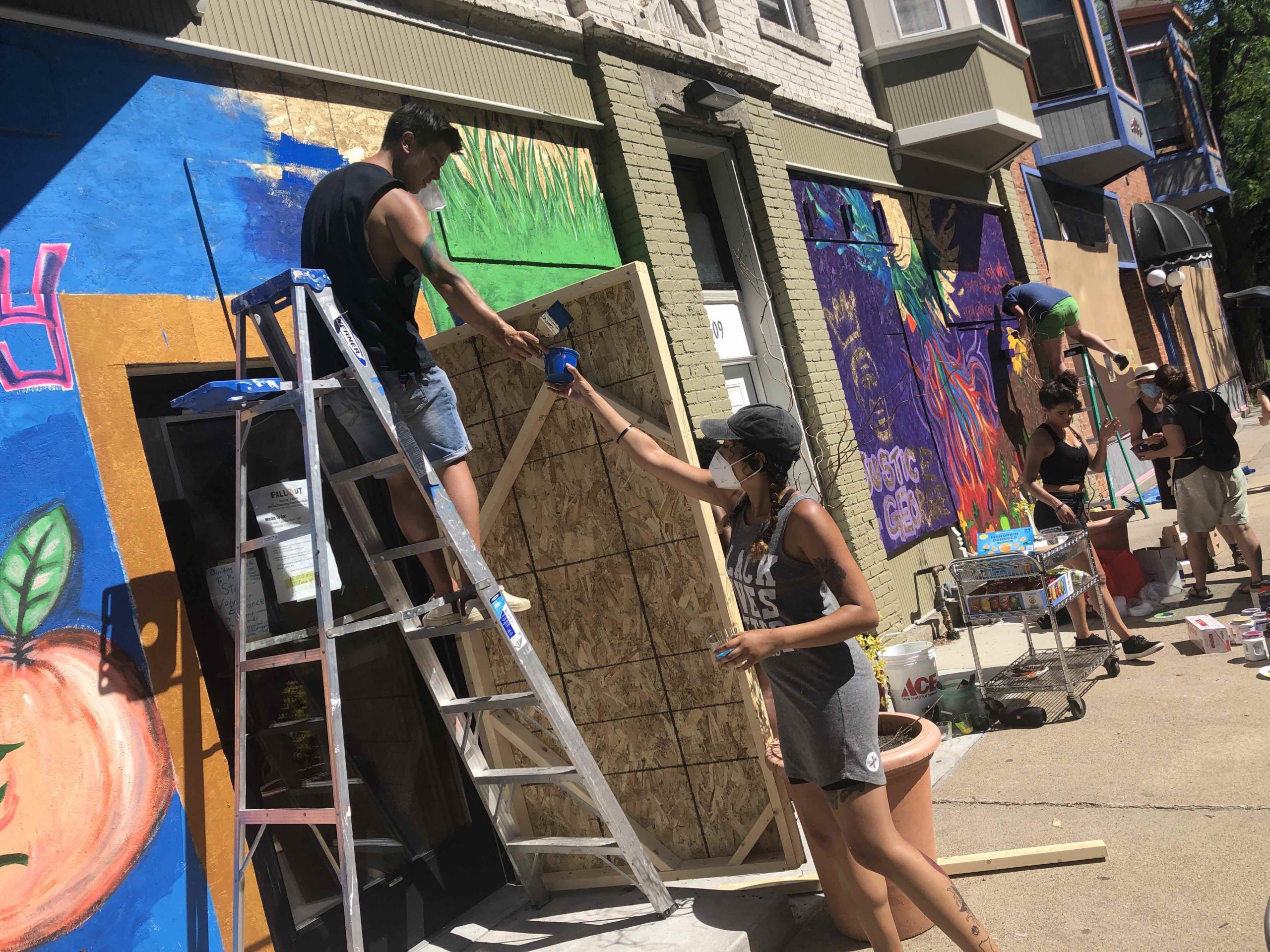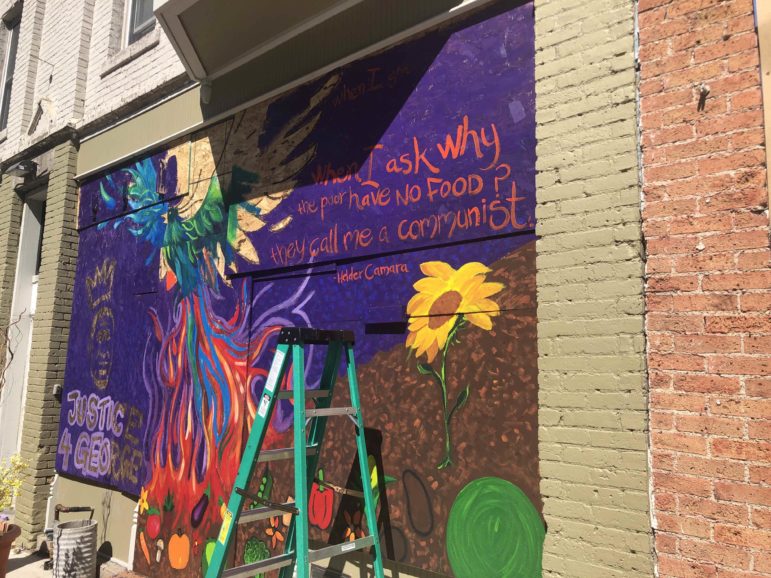

Share
Throughout Minneapolis and St. Paul artists have found new canvases in the form of boarded up buildings as a way to communicate the enormity of what is happening, intimately.
Leslie Barlow continues to develop projects in Minneapolis. At the time of our interview, she was on Stevens and 26th at The Fallout Arts Shelter. The building has become a source of sustenance in the community. Meals were coming in and out between brush strokes.
For Barlow “it’s very soothing for the artists to be able to do something like this right now because a lot of us are very traumatized by the events going on.” While Barlow is primarily a studio based oil painter she shifted to murals. “I don’t typically do murals, but I felt called to do this work because it’s quicker, it’s reactive. And you can involve community so you can involve non-painters in the work. “
The pieces by design are impermanent which was actually something Barlow took advantage of, “the fact that it’s temporary means that we can work quicker. We’re not as worried about, you know, everything being perfect and we can just get the message out. The message, whether it’s in the visual, whether it’s in the words that we’re painting, it’s about getting that message out about hope, about coming together about displaying the future that we want to see. It’s very futurist.“
Art asks us to imagine, particularly necessary at a time when the trauma of what’s happening is settling in. Creating something vibrant that requires physical exertion provides the opportunity to wade through the violent intensity of the wreckage of the past two weeks and instead begin to imagine the future. Staying busy also wards off the grief, if only for a series of moments.
“I mean, I’m a Black woman. I live two blocks away from the Memorial. I’m right in the middle of the middle and I just feel a lot of sadness, you know, I feel a lot of pain and I feel a lot of exhaustion like spiritually, mentally, physically. Even when I do have those moments, when I can be by myself, my mind is going a mile a minute. So I haven’t really had time. I have a feeling it’s going to really hit me probably a week or two from now, but right now I have the energy to be making this work. And it’s very soothing for me to make these paintings.”
Barlow further explains what she wants those outside of Minneapolis to keep in mind.
“I just hope that they understand that we’re real people. We’re really grieving. And we are also resilient. You know, you see all of us out here doing the work we’re exhausted and we’re so tired and we’re sad, but we’re able to still be out here for everybody. Our community, whether we’re painting, whether we’re delivering groceries, whether we’re marching, like we’re all doing, we’re all activated,” Barlow said. “Whenever this has happened in other parts of the country and I’m watching the stories, you get wrapped up in the sensationalization of it and you forget that, those are real people walking those streets, their legs are tired.”
As the events of the George Floyd murder unfolded it became clear that the demand for art necessitated an infrastructure. Friends like Billie White helped create an infrastructure on the fly, for supplies and nourishment, necessary to build an extensive city-wide art project. While not an artist, White is also painting.
From White’s perspective the focus on food imagery reflects the site as a source of nourishment, giving away meals. “So that’s why it’s very much like food is healing, feeding community. Over on this side, we’ve got some fruits and vegetables painted, but then the rise of the Phoenix, Justice for George.

The neighboring business also noticed the project and asked if they would continue their work saying to White,” we love what you’re all doing here.”
White is finding her voice while using art to make sense of what is happening.
“I feel like I’ve been just sort of processing, definitely processing through arts.”
White wants to make sure folks outside of Minneapolis understand “the fact that the Minneapolis police department has been this way for decades.”
For White the Police department needs to be something entirely different and rooted in de-escalation not escalation.
“If you need emergency help, you don’t need to call 911. You do not need to get the police involved with that. There should be different avenues for things. I, myself, have never, will probably never need to call the police because I have people to call.”
If someone is having a mental emergency they don’t need police they need a mental health professional.
The Nib created a graphic of what policing could look like aligned with White’s vision.

